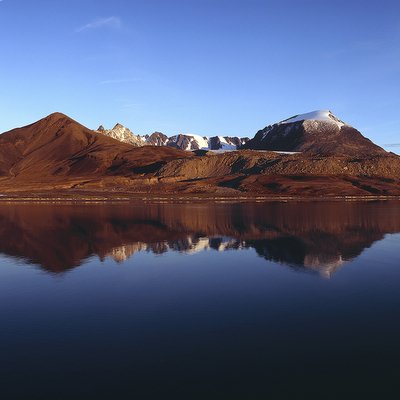Equipment developed by scientists in Norway to search for life on Mars helped discover a rare and complex bacterial community living in blue ice vents inside a frozen volcano in their country

The chief scientist at AMASE, Andrew Steele (Steele) from the Carnegie Institution's Geophysical Laboratory, explained that "Ice-filled volcanic vents like these are expected to appear on Mars and may be a potential place for life." The carbonate rocks found inside the million-year-old Sverrefjell volcano in Svalbard are similar to the carbonate rosettes found in the vaporous meteorite ALH84001, which may have been formed by similar processes. The blue ice, trapped in the vents, may present samples of water that formed the same carbonate layers at Saberfile Volcano.
Using their integrated life-discovery strategy, which was successfully tried by AMASE in 2004, the scientists located microbiota (microbiota: microflora and microfauna - plants, animals and microorganisms that can only be seen under a microscope) living and fossilized, in ice and on the surfaces and grooves of other rocks. "Our instrument, designed by scientists at the Jet Propulsion Lab (JPL), detected tiny amounts of aromatic hydrocarbons belonging to microorganisms and lichens found in rocks and ice," said JPL's Arthur Lone Lane, who made his second trip with The AMASE group.
Steele's group from Carnegie deployed a system of instruments to detect and classify small amounts of microbiota. "We conducted several successful experiments with the help of miniaturized tools adapted to special microarray protein chips (microarray - a method that makes it possible to check the amount of genes and protein in cells and tissues or how large amounts of genes work together with each other inside the cell)," says Steele. "Our results showed that we are able to maintain sterile sampling procedures without introducing contamination from humans."
The cutting of the blue ice openings and the ice on the surface was carried out according to a detailed procedure developed for this purpose to sterilize the ice cutting tools. "The organisms found in the ice are survivors! Small biological systems (ecosystems) in the ice have apparently adapted to extremely cold conditions," says Lane Benning from the University of Leeds. The ice and rock samples will be further characterized at the Smithsonian Institution's Carnegie Laboratory, and at the University of Leeds.
